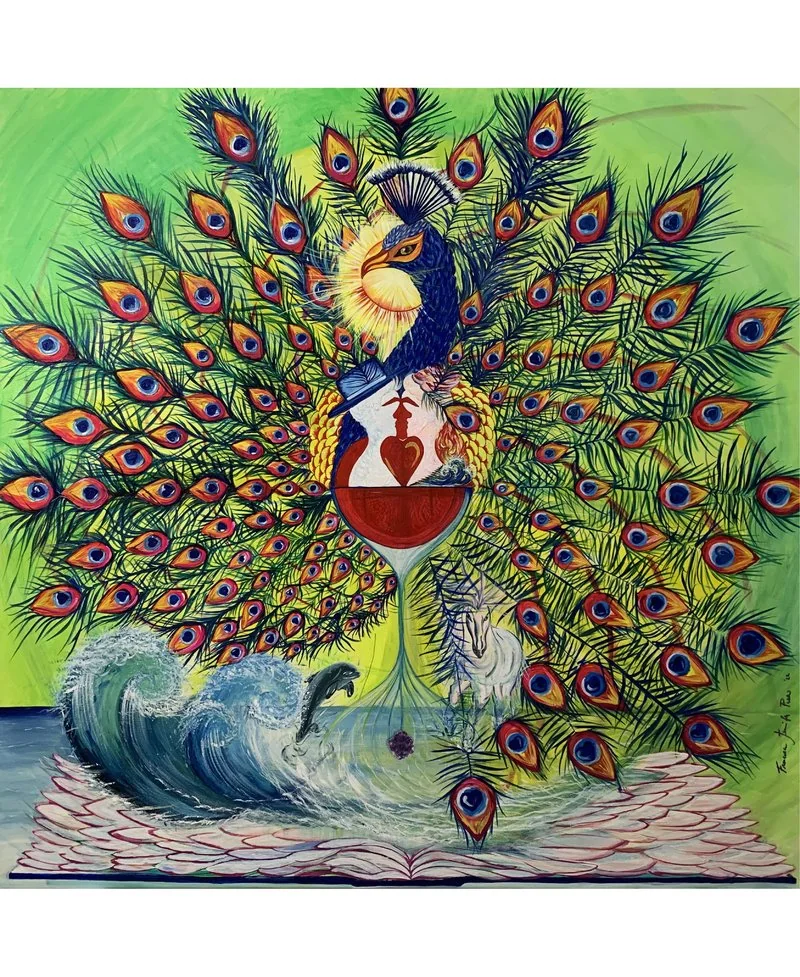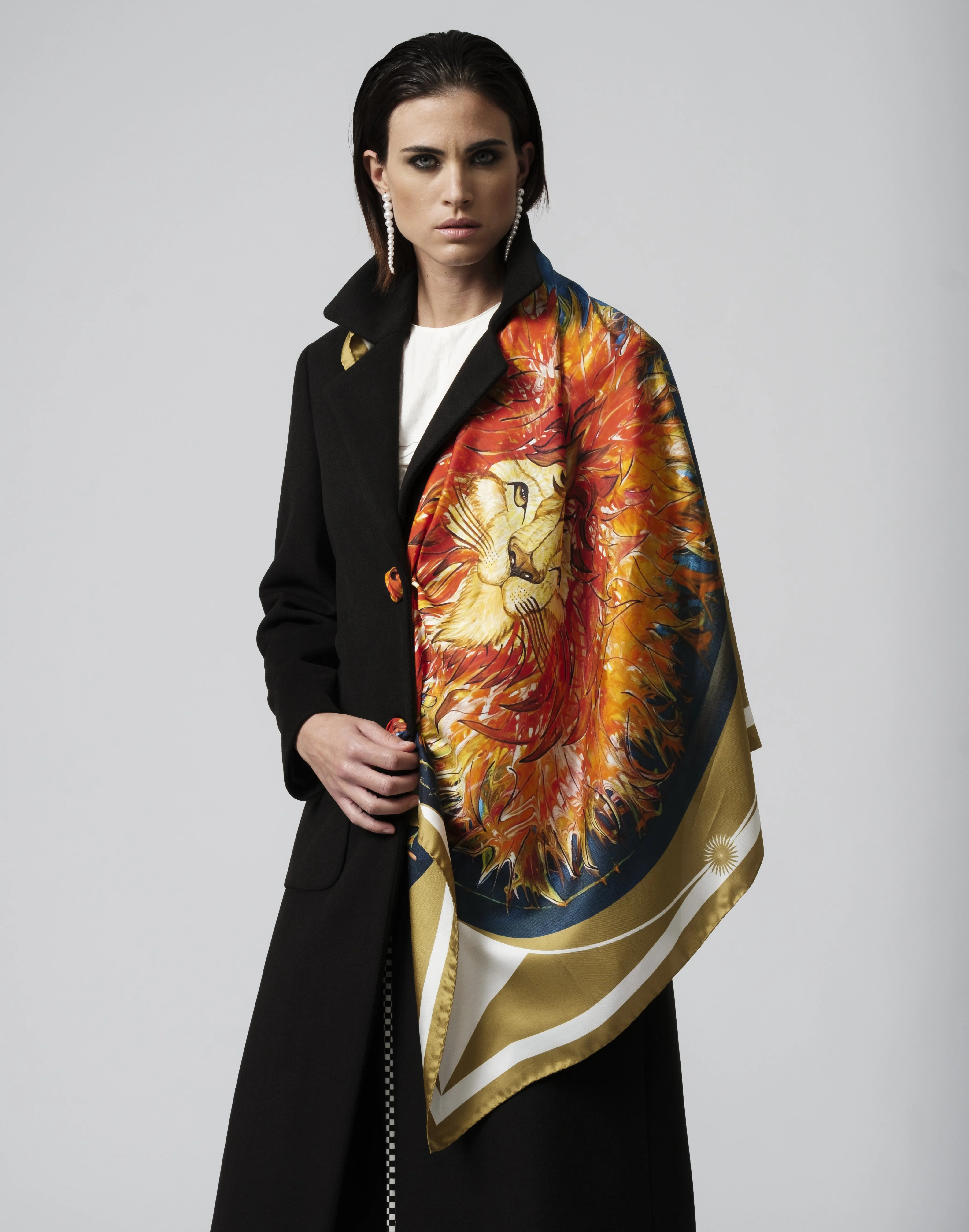PAINT THE SOUL
110X110cm, mixed technique, Sicily 2022, private collection
€ 8000.00
Mixed technique on canvas: acrylic, blend of pure essential oils consisting of Lavender, Melissa, Incense, Red Cedar, Cypress, Myrrh, Nard, Orange, Cassia and Cinnamon, Black Fir, Siberian Fir, Balsamic Fir, Nootka, Cananga, Cloves
Detail of the work: the painting of alchemical art is also made up of a real crystal, extracted from the quarry and directly applied to the brim, it is an amethyst druse.
"PAINT THE SOUL" on an anonymous canvas,
celebrating the alchemical art of the soul
with dance
and symphonic music
of Water, Fire, Earth, Air, Ether
of Amethyst Crystal and pure essential Oils
of Sight and Smell
of Aquatic and Terrain Guide Animals
of Divine Feminine and Divine Masculine
of Sun and Moon
of Symbols, Shapes, Lines, Colors
of eloquent Silence
of Spheres, Colors and Light of Angels
of Universe
of Soul in the making. "
Detail of the work: the painting of alchemical art is also made up of a real crystal, extracted from the quarry and directly applied to the brim, it is an amethyst druse.
"PAINT THE SOUL" on an anonymous canvas,
celebrating the alchemical art of the soul
with dance
and symphonic music
of Water, Fire, Earth, Air, Ether
of Amethyst Crystal and pure essential Oils
of Sight and Smell
of Aquatic and Terrain Guide Animals
of Divine Feminine and Divine Masculine
of Sun and Moon
of Symbols, Shapes, Lines, Colors
of eloquent Silence
of Spheres, Colors and Light of Angels
of Universe
of Soul in the making. "
The work is the manifestation on canvas of the artist's soul through symbols, shapes, colors, sacred geometry. From the book of life, whose pages are real angel wings created by the alchemical transmutation of life, the memories of the soul emerge that lives beyond time and space, among guiding animals, immersed in water, air, earth, fire. and ether. The fulcrum of the soul is Agape, unconditional love, sublimated by the union of the masculine Divine and the feminine Divine, lightened by the air that on the one hand allows the heart-balloon to fly high and on the other transmutes the cutting of soul wounds (from which tidal waves and volcanic fire flow) in kintsugi. Like the Mona Lisa for Leonardo, the work will accompany the artist's life in a continuous and ever deeper rediscovery of the beauty of the soul, which also speaks of universality.
The Art can be an alchemical tool for discovering one's soul, a means to process emotions or simply a way to express one's creativity. The use of essential oils in the creative and meditative process allows you to connect your essence to frequencies of nature and therefore to channel what our unconscious wants to communicate to us with symbols, shapes, colors.
There is a wide variety of essential oils that can be used to promote creativity and this doesn't mean you have to be artists: if used with intention, these aromatherapy allies can help open the doors of inner creativity; experimenting with different essential oils is a great way to find the perfect blend for your being.
Essential oils work the same way as other holistic practices to support creativity - spending time in nature, practicing meditation, writing are all great ways to relax the mind and allow inspiration to flow.
Holistic aromatherapy can therefore help unleash inner creativity, helping to balance energy and emotions and promoting a sense of calm and well-being. Contact us to find out how you too can explore your unconscious and your talents with the instrument of art and essential oils.
There is a wide variety of essential oils that can be used to promote creativity and this doesn't mean you have to be artists: if used with intention, these aromatherapy allies can help open the doors of inner creativity; experimenting with different essential oils is a great way to find the perfect blend for your being.
Essential oils work the same way as other holistic practices to support creativity - spending time in nature, practicing meditation, writing are all great ways to relax the mind and allow inspiration to flow.
Holistic aromatherapy can therefore help unleash inner creativity, helping to balance energy and emotions and promoting a sense of calm and well-being. Contact us to find out how you too can explore your unconscious and your talents with the instrument of art and essential oils.
Art and aesthetics have a profound relationship with beauty, the same one that is perceived as such by our brain thanks to the combination of colors, shapes, sounds.
In recent years, neuroscience has investigated the perception of pleasure generated by observing manifestations of beauty to the point that the neuroscientist Semir Zeki has coined a new term and that is "NEUROESTHETICS", with which we intend to define a precise field of investigation concerning the brain activity, the creative process and aesthetic judgment.
Starting from these studies, it is possible to state that the aesthetic experience is not a simple passive registration of the surrounding reality, but an active construction of meanings that involves elaboration and analysis processes.
Indeed, the observation of different types of paintings produces activity in different cortical regions, depending on the category to which the work of art belongs. The observation of figurative canvases depicting landscapes, for example, involves the bilateral hippocampal gyrus and the right parietal cortex, areas normally involved in the exploration of large visual scenes and in the representation of spatial relationships between the elements. The portraits activate areas involved in the observation of faces, such as the fusiform gyrus and the amygdala.
Finally, it has been hypothesized that the so-called mirror neurons may also be involved in the aesthetic appreciation of works of art, a particular population of neurons, present in the premotor cortex, which are activated both during the observation of an action and during the execution of the same. Mirror neurons exemplify a biological mechanism that allows the actions performed by others to be correlated with the observer's motor repertoire. The vision of an action induces in the observer the automatic simulation of that action; this mirroring mechanism is not limited to the domain of actions, but also concerns that of sensations and emotions, so much so that they would also be responsible for man's emotional responses to works of art.
In recent years, neuroscience has investigated the perception of pleasure generated by observing manifestations of beauty to the point that the neuroscientist Semir Zeki has coined a new term and that is "NEUROESTHETICS", with which we intend to define a precise field of investigation concerning the brain activity, the creative process and aesthetic judgment.
Starting from these studies, it is possible to state that the aesthetic experience is not a simple passive registration of the surrounding reality, but an active construction of meanings that involves elaboration and analysis processes.
Indeed, the observation of different types of paintings produces activity in different cortical regions, depending on the category to which the work of art belongs. The observation of figurative canvases depicting landscapes, for example, involves the bilateral hippocampal gyrus and the right parietal cortex, areas normally involved in the exploration of large visual scenes and in the representation of spatial relationships between the elements. The portraits activate areas involved in the observation of faces, such as the fusiform gyrus and the amygdala.
Finally, it has been hypothesized that the so-called mirror neurons may also be involved in the aesthetic appreciation of works of art, a particular population of neurons, present in the premotor cortex, which are activated both during the observation of an action and during the execution of the same. Mirror neurons exemplify a biological mechanism that allows the actions performed by others to be correlated with the observer's motor repertoire. The vision of an action induces in the observer the automatic simulation of that action; this mirroring mechanism is not limited to the domain of actions, but also concerns that of sensations and emotions, so much so that they would also be responsible for man's emotional responses to works of art.



